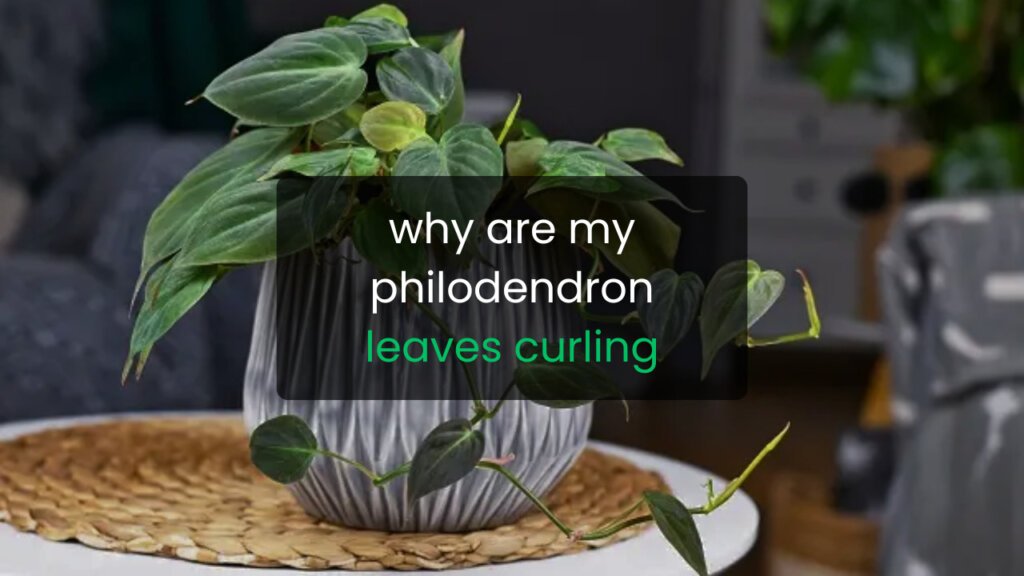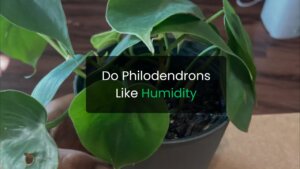Philodendrons are popular indoor plants known for their lush green leaves and easy care. But when those beautiful leaves start curling, it’s a sign your plant is stressed or something in its environment isn’t right. Understanding the reasons behind leaf curling helps you bring your philodendron back to good health quickly.
Below are the most common causes of curling philodendron leaves and how to fix them.
1. Underwatering
One of the most common reasons philodendron leaves curl is lack of water. When the soil becomes too dry, the plant conserves moisture by curling its leaves inward.
Solution:
Check the soil with your finger. If the top inch feels dry, water your philodendron thoroughly until it drains from the bottom. Keep the soil consistently moist but not soggy.
2. Overwatering
Too much water can also cause curling leaves. When roots stay waterlogged, they can’t absorb oxygen properly, leading to root rot and leaf curl.
Solution:
Ensure your pot has drainage holes and allow the soil to dry slightly between watering. Use a well-draining potting mix, ideally a blend of peat moss, perlite, and orchid bark.
3. Low Humidity
Philodendrons thrive in humid environments. Dry indoor air, especially during winter, can cause leaf edges to curl or brown.
Solution:
Increase humidity by misting the plant regularly, using a humidifier, or placing a water tray nearby. Grouping plants together also helps maintain moisture in the air.
4. Temperature Stress
Extreme cold or hot temperatures can make philodendron leaves curl. These tropical plants prefer stable indoor temperatures between 65°F and 80°F.
Solution:
Keep your plant away from air conditioners, heaters, and cold drafts. Maintain consistent room temperature throughout the year.
5. Too Much or Too Little Light
Philodendrons prefer bright, indirect sunlight. Too much direct sunlight can scorch the leaves, while too little light causes weak growth and curling.
Solution:
Place your plant near a bright window with filtered light. If your room is dim, consider using a grow light to maintain healthy growth.
6. Pest Infestation
Insects like spider mites, aphids, and thrips can cause curling leaves by sucking sap from the foliage. You may notice tiny webs or sticky residue on leaves.
Solution:
Inspect your plant regularly and wipe leaves with a damp cloth. Use insecticidal soap or neem oil spray to eliminate pests safely.
7. Nutrient Deficiency
A lack of essential nutrients, especially calcium or magnesium, can lead to curled or deformed leaves.
Solution:
Feed your philodendron every 4–6 weeks during the growing season using a balanced liquid fertilizer. Avoid over-fertilizing, which can burn roots and worsen the issue.
8. Transplant Shock
If you recently repotted your philodendron, it might be experiencing transplant stress. This temporary shock can cause leaf curling and drooping.
Solution:
Give the plant time to adjust. Keep it in a stable environment with proper moisture and light. It should recover within a few weeks.
How to Prevent Philodendron Leaf Curling
- Keep soil evenly moist but never waterlogged.
- Maintain humidity around 60%.
- Provide bright, indirect sunlight.
- Fertilize regularly during the growing season.
- Inspect for pests monthly.
Consistency is key when caring for a philodendron. Once its needs are balanced, the leaves will flatten and regain their healthy, glossy look.
FAQs
Will curled philodendron leaves uncurl again?
Yes, if the cause is corrected early, new leaves will grow normally and existing ones may relax slightly over time.
Should I cut off curled leaves?
If the leaves are severely damaged or yellow, prune them to encourage healthy new growth.
Does misting help with leaf curling?
Yes, misting increases humidity and can help reduce curling caused by dry air.
Can too much fertilizer cause leaf curling?
Yes, over-fertilization can lead to salt buildup in the soil, which damages roots and causes leaf curling.
What kind of water is best for philodendrons?
Use room-temperature filtered or distilled water. Tap water with high chlorine or fluoride can harm the plant.





